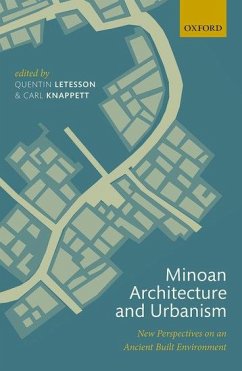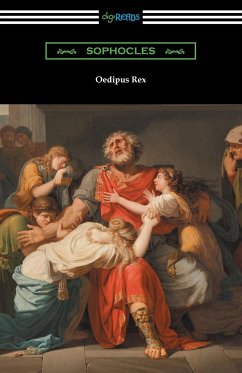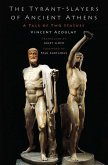- Gebundenes Buch
- Merkliste
- Auf die Merkliste
- Bewerten Bewerten
- Teilen
- Produkt teilen
- Produkterinnerung
- Produkterinnerung
Nearly 4,000 years ago some of the very earliest towns of Europe appeared on the Mediterranean island of Crete. In this book we offer new insights into these ancient palaces and towns, as a contribution to a broader understanding of the diverse ways in which humans have made and used ancient built environments.
Andere Kunden interessierten sich auch für
![Pax and the Politics of Peace Pax and the Politics of Peace]() Hannah CornwellPax and the Politics of Peace137,99 €
Hannah CornwellPax and the Politics of Peace137,99 €![Oedipus Rex Oedipus Rex]() SophoclesOedipus Rex9,49 €
SophoclesOedipus Rex9,49 €![Gerard Manley Hopkins and the Victorian Visual World Gerard Manley Hopkins and the Victorian Visual World]() Catherine PhillipsGerard Manley Hopkins and the Victorian Visual World115,99 €
Catherine PhillipsGerard Manley Hopkins and the Victorian Visual World115,99 €![A Commentary on Thucydides A Commentary on Thucydides]() Simon HornblowerA Commentary on Thucydides478,99 €
Simon HornblowerA Commentary on Thucydides478,99 €![Trojan Women Trojan Women]() EuripidesTrojan Women17,99 €
EuripidesTrojan Women17,99 €![Tyrant-Slayers of Ancient Athens Tyrant-Slayers of Ancient Athens]() Vincent AzoulayTyrant-Slayers of Ancient Athens57,99 €
Vincent AzoulayTyrant-Slayers of Ancient Athens57,99 €![Essays on the Art of Pheidias Essays on the Art of Pheidias]() Charles WaldsteinEssays on the Art of Pheidias40,99 €
Charles WaldsteinEssays on the Art of Pheidias40,99 €-
-
-
Nearly 4,000 years ago some of the very earliest towns of Europe appeared on the Mediterranean island of Crete. In this book we offer new insights into these ancient palaces and towns, as a contribution to a broader understanding of the diverse ways in which humans have made and used ancient built environments.
Hinweis: Dieser Artikel kann nur an eine deutsche Lieferadresse ausgeliefert werden.
Hinweis: Dieser Artikel kann nur an eine deutsche Lieferadresse ausgeliefert werden.
Produktdetails
- Produktdetails
- Verlag: Oxford University Press (UK)
- Seitenzahl: 416
- Erscheinungstermin: 13. September 2017
- Englisch
- Abmessung: 241mm x 164mm x 30mm
- Gewicht: 837g
- ISBN-13: 9780198793625
- ISBN-10: 0198793626
- Artikelnr.: 47864688
- Herstellerkennzeichnung
- Libri GmbH
- Europaallee 1
- 36244 Bad Hersfeld
- gpsr@libri.de
- Verlag: Oxford University Press (UK)
- Seitenzahl: 416
- Erscheinungstermin: 13. September 2017
- Englisch
- Abmessung: 241mm x 164mm x 30mm
- Gewicht: 837g
- ISBN-13: 9780198793625
- ISBN-10: 0198793626
- Artikelnr.: 47864688
- Herstellerkennzeichnung
- Libri GmbH
- Europaallee 1
- 36244 Bad Hersfeld
- gpsr@libri.de
Quentin Letesson is Marie Sklodowska-Curie postdoctoral fellow at the Department of Art, University of Toronto and the Département d'histoire de l'art et d'archéologie, Université catholique de Louvain. His work focuses on configurational analyses of the Minoan built environment, on the urbanisation of Crete, and on the emergence of technical innovations in the production of Minoan material culture. He teaches archaeological theory and ethnoarchaeology at the Université catholique de Louvain. He is involved in several excavations on Crete, most notably at Palaikastro and Sissi. Carl Knappett teaches in the Department of Art at the University of Toronto, where he holds the Walter Graham/ Homer Thompson Chair in Aegean Prehistory. He is an archaeologist interested in how things generate meaning through their creation and use. While the things of the Aegean Bronze Age are his main focus, particularly the pottery of Minoan Crete, he attempts to integrate insights from the study of things in ethnographic, ethnoarchaeological and sociological contexts with a view to developing a broad-based approach to materiality in society. His publications include Thinking Through Material Culture (Penn Press), An Archaeology of Interaction, and Network Analysis in Archaeology (both with Oxford University Press). He conducts fieldwork at various Bronze Age sites across the Aegean, and directs the new excavations at the Minoan town of Palaikastro in east Crete.
* 1: Quentin Letesson and Carl Knappett: Introduction: Minoan Built
Environment: Past Studies, Recent Perspectives, and Future Challenges
* Part I
* 2: Quentin Letesson and Carl Knappett: Architecture: Building
Dynamics at the Micro-Scale
* 3: Tim Cunningham: Best Laid Plans: An Archaeology of Architectural
Anomalies in Bronze Age Crete
* 4: Maud Devolder: Architectural Energetics and Late Bronze Age Cretan
Architecture: Measuring the Scale of Minoan Building Projects
* 5: Jan Driessen: Understanding Minoan in-House Relationships on Late
Bronze Age Crete
* Part II
* 6: Quentin Letesson and Carl Knappett: Urbanism: Built Space and
Communities at the Meso-scale
* 7: Todd Whitelaw: The Development and Character of Urban Communities
in Prehistoric Crete in their Regional Context: A Preliminary Study
* 8: Clairy Palyvou: Minoan Group Design: The 'View from the Bridge'
* 9: D. Matthew Buell and John McEnroe: Community Building/Building
Community at Gournia
* 10: Joseph W. Shaw: The Middle Minoan Slipway for Ships at the Kommos
Harbour, and Harbour Development in Prehistoric Crete
* Part III
* 11: Quentin Letesson and Carl Knappett: Processes AndPatterns at the
Macro-Scale: Crete and Beyond
* 12: Eleftheria Paliou and Andrew Bevan: Computational Approaches to
Minoan Settlement Interaction and Growth
* 13: Louise A. Hitchcock and Aren M. Maeir: Lost in Translation:
Settlement Organization in Postpalatial Crete, a View from the East
* 14: Rodney D. Fitzsimons and Evi Gorogianni: Dining on the Fringe? A
Possible Minoan-Style Banquet Hall at Ayia Irini, Kea and the
Minoanisation of the Aegean Islands
* 15: Quentin Letesson, Carl Knappett, and Michael E. Smith: A
Comparative Perspective on Minoan Urbanism
Environment: Past Studies, Recent Perspectives, and Future Challenges
* Part I
* 2: Quentin Letesson and Carl Knappett: Architecture: Building
Dynamics at the Micro-Scale
* 3: Tim Cunningham: Best Laid Plans: An Archaeology of Architectural
Anomalies in Bronze Age Crete
* 4: Maud Devolder: Architectural Energetics and Late Bronze Age Cretan
Architecture: Measuring the Scale of Minoan Building Projects
* 5: Jan Driessen: Understanding Minoan in-House Relationships on Late
Bronze Age Crete
* Part II
* 6: Quentin Letesson and Carl Knappett: Urbanism: Built Space and
Communities at the Meso-scale
* 7: Todd Whitelaw: The Development and Character of Urban Communities
in Prehistoric Crete in their Regional Context: A Preliminary Study
* 8: Clairy Palyvou: Minoan Group Design: The 'View from the Bridge'
* 9: D. Matthew Buell and John McEnroe: Community Building/Building
Community at Gournia
* 10: Joseph W. Shaw: The Middle Minoan Slipway for Ships at the Kommos
Harbour, and Harbour Development in Prehistoric Crete
* Part III
* 11: Quentin Letesson and Carl Knappett: Processes AndPatterns at the
Macro-Scale: Crete and Beyond
* 12: Eleftheria Paliou and Andrew Bevan: Computational Approaches to
Minoan Settlement Interaction and Growth
* 13: Louise A. Hitchcock and Aren M. Maeir: Lost in Translation:
Settlement Organization in Postpalatial Crete, a View from the East
* 14: Rodney D. Fitzsimons and Evi Gorogianni: Dining on the Fringe? A
Possible Minoan-Style Banquet Hall at Ayia Irini, Kea and the
Minoanisation of the Aegean Islands
* 15: Quentin Letesson, Carl Knappett, and Michael E. Smith: A
Comparative Perspective on Minoan Urbanism
* 1: Quentin Letesson and Carl Knappett: Introduction: Minoan Built
Environment: Past Studies, Recent Perspectives, and Future Challenges
* Part I
* 2: Quentin Letesson and Carl Knappett: Architecture: Building
Dynamics at the Micro-Scale
* 3: Tim Cunningham: Best Laid Plans: An Archaeology of Architectural
Anomalies in Bronze Age Crete
* 4: Maud Devolder: Architectural Energetics and Late Bronze Age Cretan
Architecture: Measuring the Scale of Minoan Building Projects
* 5: Jan Driessen: Understanding Minoan in-House Relationships on Late
Bronze Age Crete
* Part II
* 6: Quentin Letesson and Carl Knappett: Urbanism: Built Space and
Communities at the Meso-scale
* 7: Todd Whitelaw: The Development and Character of Urban Communities
in Prehistoric Crete in their Regional Context: A Preliminary Study
* 8: Clairy Palyvou: Minoan Group Design: The 'View from the Bridge'
* 9: D. Matthew Buell and John McEnroe: Community Building/Building
Community at Gournia
* 10: Joseph W. Shaw: The Middle Minoan Slipway for Ships at the Kommos
Harbour, and Harbour Development in Prehistoric Crete
* Part III
* 11: Quentin Letesson and Carl Knappett: Processes AndPatterns at the
Macro-Scale: Crete and Beyond
* 12: Eleftheria Paliou and Andrew Bevan: Computational Approaches to
Minoan Settlement Interaction and Growth
* 13: Louise A. Hitchcock and Aren M. Maeir: Lost in Translation:
Settlement Organization in Postpalatial Crete, a View from the East
* 14: Rodney D. Fitzsimons and Evi Gorogianni: Dining on the Fringe? A
Possible Minoan-Style Banquet Hall at Ayia Irini, Kea and the
Minoanisation of the Aegean Islands
* 15: Quentin Letesson, Carl Knappett, and Michael E. Smith: A
Comparative Perspective on Minoan Urbanism
Environment: Past Studies, Recent Perspectives, and Future Challenges
* Part I
* 2: Quentin Letesson and Carl Knappett: Architecture: Building
Dynamics at the Micro-Scale
* 3: Tim Cunningham: Best Laid Plans: An Archaeology of Architectural
Anomalies in Bronze Age Crete
* 4: Maud Devolder: Architectural Energetics and Late Bronze Age Cretan
Architecture: Measuring the Scale of Minoan Building Projects
* 5: Jan Driessen: Understanding Minoan in-House Relationships on Late
Bronze Age Crete
* Part II
* 6: Quentin Letesson and Carl Knappett: Urbanism: Built Space and
Communities at the Meso-scale
* 7: Todd Whitelaw: The Development and Character of Urban Communities
in Prehistoric Crete in their Regional Context: A Preliminary Study
* 8: Clairy Palyvou: Minoan Group Design: The 'View from the Bridge'
* 9: D. Matthew Buell and John McEnroe: Community Building/Building
Community at Gournia
* 10: Joseph W. Shaw: The Middle Minoan Slipway for Ships at the Kommos
Harbour, and Harbour Development in Prehistoric Crete
* Part III
* 11: Quentin Letesson and Carl Knappett: Processes AndPatterns at the
Macro-Scale: Crete and Beyond
* 12: Eleftheria Paliou and Andrew Bevan: Computational Approaches to
Minoan Settlement Interaction and Growth
* 13: Louise A. Hitchcock and Aren M. Maeir: Lost in Translation:
Settlement Organization in Postpalatial Crete, a View from the East
* 14: Rodney D. Fitzsimons and Evi Gorogianni: Dining on the Fringe? A
Possible Minoan-Style Banquet Hall at Ayia Irini, Kea and the
Minoanisation of the Aegean Islands
* 15: Quentin Letesson, Carl Knappett, and Michael E. Smith: A
Comparative Perspective on Minoan Urbanism








